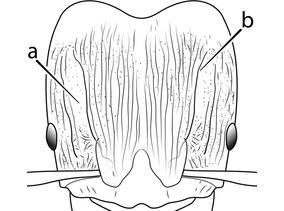TAXA (also search by using taxonomy search bar in header)
Pheidole flavens-complex [Invalid]
Nomenclature
SUMMARY
The P. flavens-complex is defined here to include P. flavens Roger, P. moerens Wheeler and their respective junior synonyms. A more detailed taxonomic study of this species complex across its geographic range and morphological analysis of available type material is required before P. flavens Roger and P. moerens Wheeler can be reliably diagnosed from each other. Wilson (2003: 374) loosely defined the P. flavens complex as a group of species within the P. flavens clade. The P. flavens clade as defined by Wilson [1] is now known to be polyphyletic [2], and unpublished data analyzed by the authors suggests that the P. flavens complex as defined by Wilson also lacks monophyly. Our use of the term P. flavens complex in the context of this paper is limited to P. flavens Roger, P. moerens Wheeler and all taxa treated by Wilson[1] as their junior synonyms. Pheidole exigua is morphologically quite similar the aforementioned taxa, and future attempt to define the flavens complex clade should include it in analyses, along with P. glomericeps and possibly other species not initially considered by Wilson. A clear understanding of the phylogenetic relationship among the aforementioned taxa and the species currently being treated as P. flavens and P. moerens that are invading regions outside of the Neotropics remains a challenge for future studies[3].
引用
- E. O. Wilson, Pheidole of the New World: A dominant, hyperdiverse ant genus. Cambridge, MA: Harvard University Press, 2003, p. [ix] + 794.
- C. S. Moreau, “Unraveling the evolutionary history of the hyperdiverse ant genus Pheidole (Hymenoptera: Formicidae)”, Molecular Phylogenetics and Evolution, vol. 48, no. 1, pp. 224 - 239, 2008.
- E. M. Sarnat, Rabeling, C., Economo, E. P., and Wilson, E. O., “First record of a species from the New World Pheidole flavens-complex (Hymenoptera: Formicidae) introduced to the southwestern Pacific”, BioInvasions Records, vol. 3, no. 4, pp. 301 - 307, 2014.


